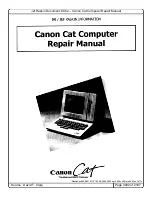
Any
other
combination
of
processor
definitions
is
not
supported.
Coupling
Facility
LPs
Using
Dedicated
Central
Processors
(CPs)
or
Dedicated
Internal
Coupling
Facility
(ICF)
CPs
Important
Note
IBM
strongly
recommends
using
dedicated
CPs
or
dedicated
ICFs
for
production
coupling
facility
LPs
because
coupling
facility
channel
paths
and
requests
have
critical
response
time
requirements.
When
the
coupling
facility
is
running
on
a
dedicated
CP
or
dedicated
ICF
CP,
an
“active
wait”
polling
algorithm
is
used
to
look
for
coupling
facility
requests.
This
results
in
the
fastest
response
time
and
throughput
possible
for
coupling
facility
requests.
Considerations
for
Coupling
Facilities
using
Internal
Coupling
Facility
(ICF)
CPs:
The
following
considerations
apply
to
coupling
facility
LPs
that
use
ICF
CPs.
v
ICF
CPs
are
managed
separately
from
general
purpose
CPs.
Their
presence
and
usage
does
not
affect
any
of
the
definition
or
activation
rules
pertaining
to
LPs
that
use
general
purpose
CPs.
v
ICF
CPs
will
appear
in
RMF
Partition
Data
reports
and
other
similar
reports
only
when
an
LP
is
activated
and
assigned
to
use
an
ICF
CP.
v
Non-ICF
work
is
never
allowed
to
be
run
on
an
ICF
CP.
Only
PR/SM
(to
manage
the
CP)
or
a
logical
partition
defined
to
use
ICFs
is
allowed
on
the
ICF
CP.
Coupling
Facility
LPs
Using
Shared
Central
Processors
(CPs)
or
Shared
Internal
Coupling
Facility
(ICF)
CPs
Using
shared
CPs
for
coupling
facility
LPs
has
the
following
considerations.
The
same
set
of
considerations
for
using
shared
CPs
equally
apply
to
using
shared
ICF
CPs.
v
You
should
not
cap
the
processing
weights
for
a
coupling
facility
LP.
If
you
cap
processing
weights
and
you
are
running
a
coupling
facility,
LPAR
attempts
to
support
the
cap
but
may
not
be
successful
and
the
system
can
be
less
responsive.
v
A
CF
with
shared
CPs
may
use
less
CPU
resource,
but
this
may
come
at
an
expense
to
performance.
The
CF
LIC
runs
in
a
polling
loop
so
it
always
looks
busy,
even
if
there
is
little
CF
activity.
If
the
CF
is
sharing
a
CP
with
a
z/OS
image
that
has
low
CPU
demands,
the
CF
could
use
the
entire
CP.
If
the
CF
is
sharing
CP(s)
with
another
CF,
both
will
look
busy
and
the
CPU
resource
will
be
split
between
them.
For
example,
if
a
production
CF
and
a
test
CF
shared
a
CP
with
equal
weights,
each
would
only
have
use
of
one-half
the
CP.
This
would
appear
on
the
RMF
CF
Usage
Summary
Report
as
LOGICAL
PROCESSORS:
DEFINED
1
EFFECTIVE
0.5.
Requests
to
a
CF
that
is
sharing
a
CP
may
have
to
wait
if
another
image
(z/OS
or
CF)
is
using
the
shared
CP.
In
fact,
the
CF’s
logical
CP
may
have
to
wait
for
several
logical
CPs
of
other
partitions
to
run
before
it
runs
again.
This
has
the
net
effect
of
elongating
response
times.
Requests
to
the
CF
that
could
typically
take
several
microseconds
in
a
dedicated
environment
can
be
elongated
by
many
milliseconds,
easily
12.5
to
25
milliseconds
or
more.
If
CF
response
time
is
not
a
consideration
(for
example,
a
test
CF
or
a
backup
CF),
the
installation
can
further
limit
CF
usage
of
CPU
resource
by
enabling
the
Dynamic
Dispatch
option.
This
will
periodically
pause
the
polling
loop.
The
number
and
length
of
the
pauses
is
determined
by
the
activity
in
this
CF.
While
this
gives
more
CPU
resource
to
the
other
partitions
that
are
sharing
the
CP,
it
elongates
the
service
time
in
this
CF,
in
most
cases,
by
a
considerable
amount.
Chapter
3.
Determining
the
Characteristics
of
Logical
Partitions
3-31
Summary of Contents for Z9
Page 1: ...System z9 Processor Resource Systems Manager Planning Guide SB10 7041 03...
Page 2: ......
Page 3: ...System z9 Processor Resource Systems Manager Planning Guide SB10 7041 03...
Page 12: ...x PR SM Planning Guide...
Page 18: ...xvi PR SM Planning Guide...
Page 26: ...xxiv PR SM Planning Guide...
Page 54: ...1 28 PR SM Planning Guide...
Page 126: ...2 72 PR SM Planning Guide...
Page 220: ...4 8 PR SM Planning Guide...
Page 232: ...5 12 PR SM Planning Guide...
Page 250: ...B 16 PR SM Planning Guide...
Page 266: ...D 10 PR SM Planning Guide...
Page 272: ...X 6 PR SM Planning Guide...
Page 273: ......
Page 274: ...Printed in USA SB10 7041 03...
















































